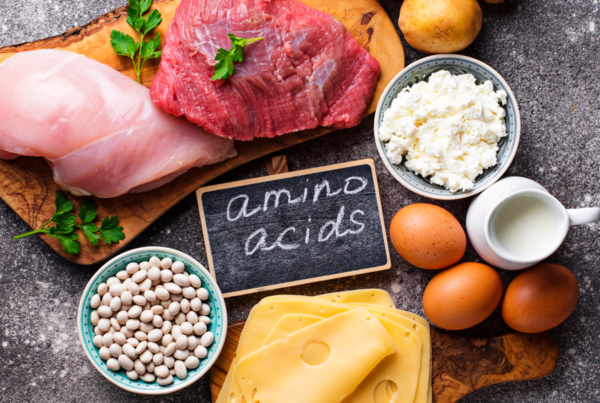If you follow my teaching, you know that I emphasize nutrients over calories. I want to reverse the way we think about food. Rather than focusing on primarily calories and macronutrients, I concentrate on the micronutrients and phytonutrients that allow our bodies to perform as they were designed. These nutrients help our bodies recover from the stress of living and optimize energy production. Without them, the calories do not do much for us. Because of this, today I want to cover the importance of fiber.
>
“We do not get enough fiber in our diet. Our current minimum recommendation is woefully low because our bodies thrive when we consume a significant amount of this important nutrient.”
The Bulk of the Matter
One of the most important components of food that provides innumerable benefits but often is neglected is fiber. If I have any regret from the nutritional chapter in my book, Authentic Health, it’s that I didn’t emphasize it as much as I wish I had. We do not get enough fiber in our diet. Our current minimum recommendation is woefully low because our bodies thrive when we consume a significant amount of this important nutrient.
Fiber is a very important component of our diet as it is a prebiotic, meaning it actually feeds the good bacteria in our gut. It forms bulk in our stool and improves bowel regularity and composition. It binds cholesterol in the gut and helps reduce cholesterol absorption. Fiber also contributes to satiation, the feeling of fullness when we eat, and therefore naturally controls appetite. It also slows down the absorption of sugars into our bloodstream and can help control blood sugars after a meal. It both nourishes and satisfies you.
How Do I Increase My Fiber?
Fiber is found in most foods, but it’s most abundant in non-starchy vegetables and fruits. Fiber is also abundant in seeds, nuts, grains, and legumes. However, if you follow my teaching, you’ll know that I emphasize using only non-GMO properly prepared grains and legumes. While some individuals thrive on a whole food, plant-based diet rich in natural grains and legumes, others may have sensitivity to grains and legumes. The primary issue is the source and the preparation.
I recommend eating a lot of natural fiber through consumption of non-starchy vegetables, organic fruits (but watch total amount of fruit intake), and seeds and nuts. I also recommend limiting fruit, as it is higher in sugar.
Some individuals will benefit from using a daily fiber supplement. I personally use one for all of the benefits it provides me. I prefer fiber supplements that come from real food such as organic, high-quality psyllium husk, ground flaxseeds and chia seed, and other natural sources. These will usually contain insoluble fiber, prebiotics, and omega 3s that will nourish your gut and make digestive function easy for you. Once you get used to them, they easily become part of your daily routine.
There are a lot of different versions of fiber. Some will cause bloating and gas for you. In this case, you may need to switch to a different source. A lot of it has to do with the composition of your gut microbiome. But you can find the fibers that work best for you. They are the ones that aid in bowel regularity, promote satiety, and give you a sense of wellbeing.
How Much Fiber is Enough?
You need to get plenty of fiber in your diet if you want to succeed in maintaining a healthy weight. I recommend getting a minimum of 30 grams a day, but preferably 40 to 60 to optimize health. Because our distant ancestors ate a natural whole-food based diet, they likely consumed over 100 grams a day. Our modern foods have been stripped of the fiber that is so nourishing for us. The only way to get to get enough is to eat more produce and consume less processed foods.
>
“Our modern foods have been stripped of the fiber that is so nourishing for us. The only way to get to get enough is to eat more produce and consume less processed foods.”
You also want a mixture of soluble and insoluble fiber. On food labels, the amount is listed and is broken down into soluble and insoluble. So it’s easy to identify how much fiber is in a food you’re consuming. You also can find nutrition tables on multiple different apps or searching the internet.
My patients have consistently told me that one of the best pieces of advice they followed was to increase their fiber. They never regret honoring their body’s need for this vital nutrient.
Make sure you’re consuming enough fiber in your diet. It’s an important nutrient that maintains regularity and gives our bodies energy.
If you have questions about how to eat more fiber or which fiber is best for you, contact me. I want to see you on a journey to your most authentic health. A healthy diet is one of the best ways to succeed.







